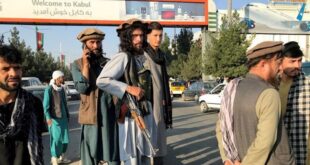More than two months after the fall of Afghanistan to the Taliban and the United States’ botched evacuation efforts, Washington is still struggling to formulate a coherent counterterrorism approach for what happens next.
There is a wide range of assessments on the strength and intentions of jihadist groups operating in Afghanistan, including al-Qaeda and Islamic State Khorasan (IS-K).
The relationship between the U.S. and Pakistan remains fraught, particularly regarding Afghanistan, given Islamabad’s ongoing support to the Taliban throughout the past two decades.
Washington has few good options in terms of basing needed to conduct “over-the-horizon” counterterrorism missions, as various regional relationships each have their drawbacks.
More than two months after the fall of Afghanistan to the Taliban and the United States’ botched evacuation efforts, Washington is still struggling to formulate a coherent counterterrorism approach. There is still no clear blueprint for exactly how the United States will conduct so-called “over-the-horizon” counterterrorism strikes against terrorist groups in Afghanistan, and the options for basing in the region each have their own drawbacks. With no presence on the ground in Afghanistan and a deep sense of betrayal among many Afghan partners left behind by Western states, the U.S. intelligence community will be challenged to cultivate human intelligence (HUMINT) assets and is wary of becoming overly reliant on signals intelligence (SIGINT). The U.S. also lacks a willing government partner for intelligence cooperation within Afghanistan, something it had under the previous government with the National Directorate of Security (NDS). When asked about U.S. intelligence capabilities in Afghanistan at a hearing this week before the Senate Armed Services Committee (SASC), Undersecretary of Defense for Policy Colin Kahl replied, “Ideally, you would have partners on the ground. That’s not the case in Afghanistan.”
There is a wide range of assessments on the strength and intentions of jihadist groups operating in Afghanistan, including al-Qaeda and Islamic State Khorasan (IS-K). In the SASC hearing, Kahl suggested that al-Qaeda could rebuild its networks to pose a direct threat to the West within the next two years. Earlier assessments provided by top-ranking military officers have suggested a far shorter timeline, including as soon as six months. That same time frame—six months—was how long Kahl indicated it could take IS-K to generate the capacity to conduct external operations, including in the West. IS-K has already been linked to a transnational plot targeting NATO and U.S. military bases in Germany, dating back to April 2020. One of the concerns among the counterterrorism community more broadly is that the U.S. government’s assessments, to date, have frequently proven far more optimistic than what has transpired, and the diverging estimates signal a lack of clarity at senior levels.
Some recent media reporting, including from CNN, suggests that the U.S. is nearing a formalized agreement with Pakistan to use its airspace for military and intelligence operations in neighboring Afghanistan. But to date, no agreement has been finalized. Furthermore, the relationship between Washington and Islamabad remains fraught, particularly with respect to Afghanistan, given Pakistan’s ongoing support to the Taliban throughout the past two decades. Pakistan continues to work through informal channels to supply the Taliban with valuable intelligence that can be used to attack IS-K operational hubs. For its part, IS-K has ramped up attacks against the Taliban, its operational tempo increasing drastically over the past six weeks. There are serious concerns that the Taliban will be unable to effectively counter IS-K, especially given the task of governing a war ravaged country facing looming economic and humanitarian crises—nearly 23 million Afghans are projected to face food insecurity this coming winter, and the economy is on the verge of collapse. Reports of starving children and families, and the stampede at the border crossings with Pakistan, continue to raise widespread fears about the impact of violence, trafficking, and lack of medical aid to children. In many instances, women and girls, who remain especially vulnerable given the lack of access to public services and spaces.
Options for basing include several Central Asian states, namely Uzbekistan and Tajikistan, but each of these options is impacted by the influence that Russia still wields in the region. In an interesting development, Tajikistan recently approved the construction of a new Chinese military base, as Beijing’s security footprint continues to grow throughout Central Asia. Over-the-horizon operations are currently dependent on military bases in the Persian Gulf, and the long distances present a range of logistical challenges to these missions. Facilities in Qatar and Bahrain are located more than 1,500 flight miles away. Even if the U.S. is able to solve the basing issue, there are still doubts about the accuracy of intelligence that feeds into planning “over-the-horizon” strikes, as evidenced by the disastrous events related to a late August drone strike, which resulted in the death of ten Afghan civilians, including an aid worker and seven children. Regional players are already busy at work grooming proxies within Afghanistan, and countries like Russia, China, and Iran have been dealing directly with the Taliban in an effort to increase their respective influence in the country. With no firm basing access, and questions regarding the effectiveness of “over-the-horizon” strikes, in a climate shaped by distrust and disappointment with the West, the U.S. counterterrorism strategy for Afghanistan could most aptly be characterized as inchoate.
 Eurasia Press & News
Eurasia Press & News




